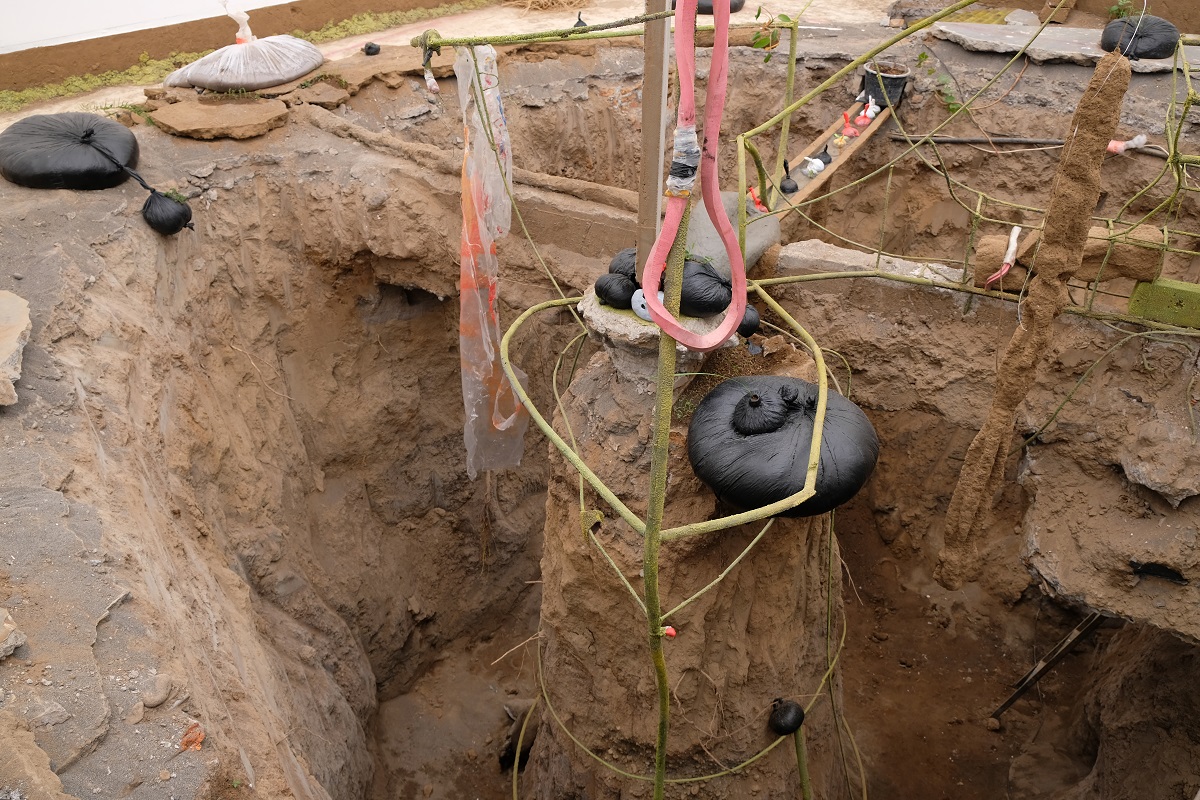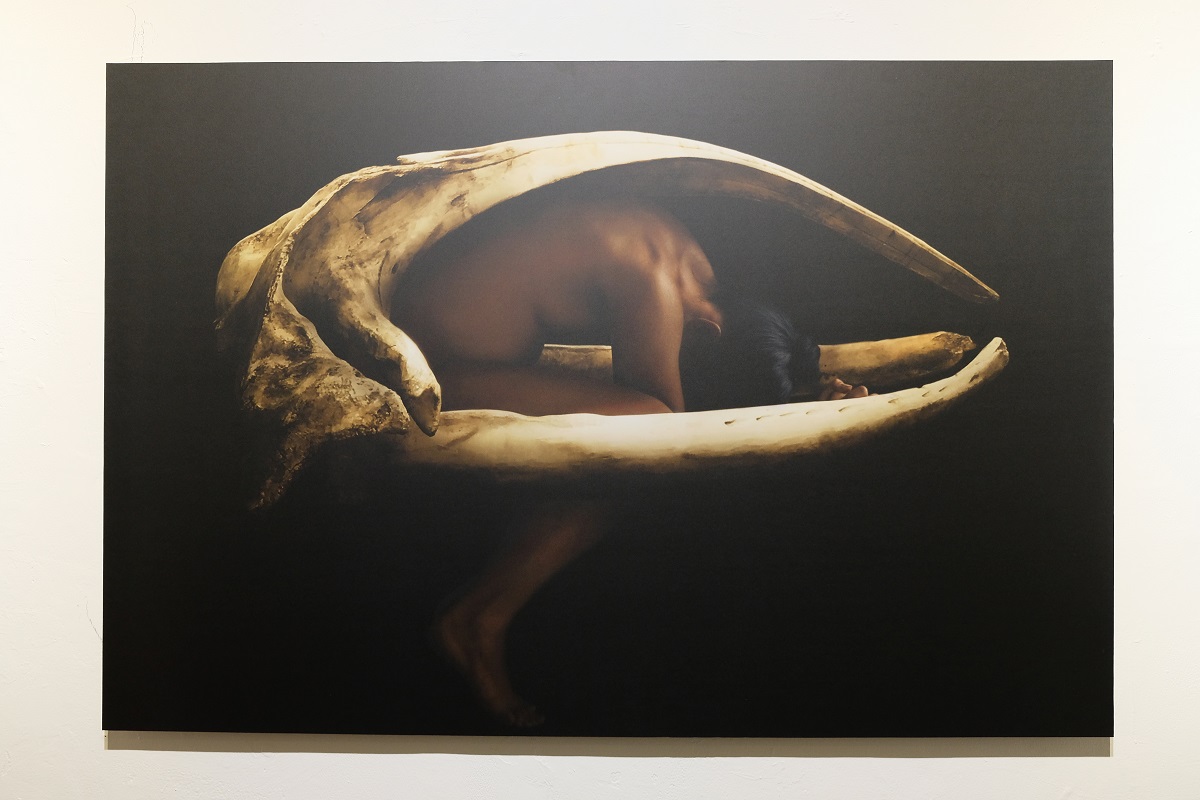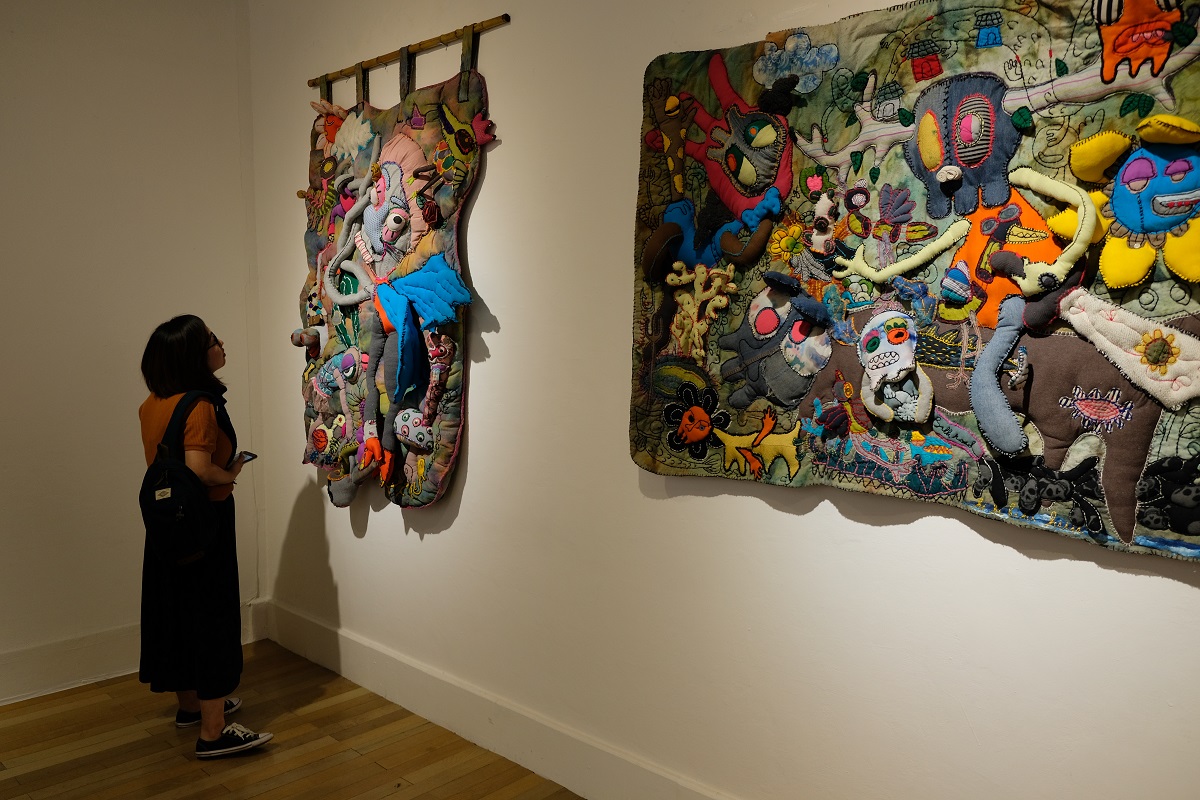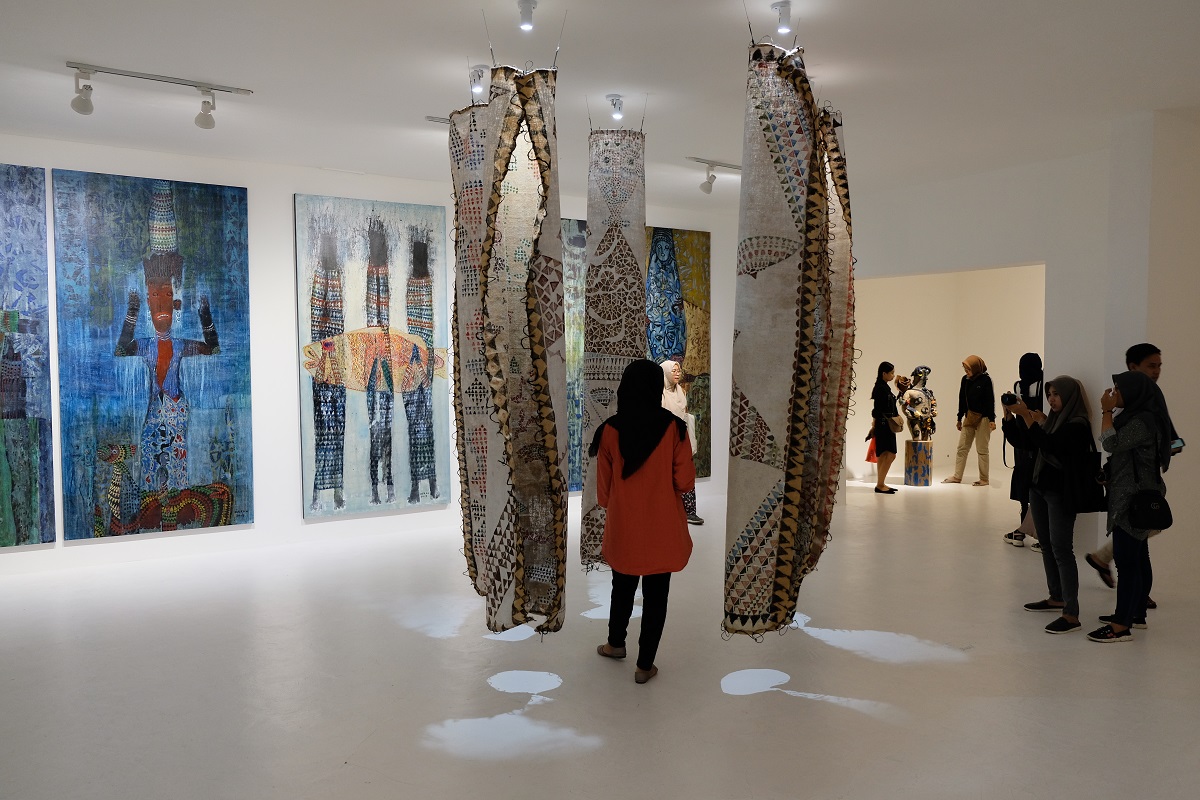I must admit, contemporary art is something I have never been able to truly enjoy. Its propensity toward anything “out of the box” which requires deep contemplation to “understand” it rarely inspires me. Of all the artworks that fall into this category, there’s one particular example with which I struggle the most to see its artistic value. It’s a white canvas “painting”, or just white canvas if you will. If nothing is painted on it, why should we even call it a painting? Many cultures around the world treat their traditional cooking as art, but I believe no one would call something with only water as its sole ingredient a proper dish.
However, my skepticism toward contemporary art was completely shattered when I went to ARTJOG 2019 (officially ARTJOG MMXIX), this year’s edition of a month-long showcase in the city of Yogyakarta (also known as Jogja) which was inaugurated in 2008. From an art fair, this annual event has evolved into one of Indonesia’s most prestigious festivals for the country’s biggest talents and art enthusiasts. The choice of Jogja, a city of 422,000 that is also the capital of an eponymous province with more than 3.5 million people, as the host of this important event is largely due to its position as one of Indonesia’s leading art and culture centers, with Bandung in West Java as its main rival.
On our visit to the Jogja National Museum – the location of ARTJOG 2019 – in early August, James and I were accompanied by Liesha, a fellow trainee at my first company who went with me to the Tidung Islands back in 2011, herself a fan of modern, quirky art. The entrance to the venue was a white panel with square patterns underneath a lofty white architectural skeleton which shone brightly against the blue sky. As we entered, a large hole in the ground resembling an archaeological excavation site welcomed us. It was Handiwirman Saputra’s work, created to question our modern penchant for a “green lifestyle” reflected in the aesthetics of a garden, which ironically shows our obsession for anything artificial.
In the next outdoor section of the exhibition was Andrita Yuniza Orbandi’s Whirlwind of Time, made from hundreds of fallen tree branches which were assembled to create the physical representation of a storm. Its eye was an empty space with one small shrub right in the middle of it, symbolizing how pressures in our lives are caused by our own actions and thoughts. Farther on was a dark room where visitors could watch a sobering video about the state of our oceans through a half-dome metal sculpture with patterned teak-leaf shapes welded onto it. After the end of the exhibition, this work by Teguh Ostenrik will be submerged in the waters of North Maluku in eastern Indonesia to make a home for corals and fish, creating a new underwater mini-ecosystem. For the artist, this project was his small effort to make sure that art could directly contribute to the conservation of nature.
Just inside the main building of the museum was Ugo Untoro’s petrified horse skin punctured by stainless steel darts forming the symbol for infinity, then, in a separate chamber we came across Lifepatch, which presented narratives surrounding Dutch colonialism in North Sumatra. Collectively, the artworks in this section attempted to convey the message that history is never singular for there will always be multiple perspectives depending on who we ask. In the next chamber were visual arts inspired by Indonesian folklore, including one from Yamdena, a remote island in Maluku, eastern Indonesia. The local islanders believe that a long time ago, there was a princess called Lamditi who was famous for her beautiful voice. Her love affair with Egel, a slave, enraged the king and his eldest son who then conspired to make Egel vanish by sending him off into the open ocean. Devastated, the princess who was already pregnant went out to sea hoping to reunite with her loved one. Both of them were never found, but now the locals believe that the princess has reincarnated as a whale whose singing can be heard in the depths of the ocean, hence the customary prohibition to hunt female whales who are pregnant or nurturing their calves.
In the subsequent chamber were Riono Tanggul Nusantara’s works, depicting skinned animals hung in the forest. This is an allegory of human greed which encompasses all aspects, including in the field of art which has now become a competitive world, ready to claim victims whenever it desires. Crossing the corridor, the three of us entered a room where a robotic arm moved along a horizontal axis to paint the canvas green while going up and down from left to right in a repetitive manner. It was connected to a palm tree through wires that transmitted the plant’s organic electric current, processing it into signals that regulated the machine’s movements. Bandung-based Bagus Pandega and Tokyo-based Kei Imazu collaborated to create this spectacularly haunting artwork that highlighted the destruction of Indonesian forests by the palm oil industry. Educated as an engineer, I was astonished by the idea behind this piece of work and its execution which combined technology and art.
The artworks displayed in the next area were no less intriguing. At first glance, one was just a painting of tropical fruits. But upon closer inspection, a blue label on a banana said “Pssst! I’m full of colonial sins.” Jogja-based artist Elia Nurvista who’d found her interest in critical discourse and narratives about food put up thought-provoking pieces reminding the public about how a multitude of food ingredients traveled across the world thanks to European colonialism. Today, while “exotic” fruits are widely welcomed in Europe, the same case does not apply to the people who come from places that produce them.
On the second floor of the venue were some endearing artworks by Robet and Olga, a couple from the city of Solo, not far from Jogja, which stole Liesha’s attention the most. Directly across the corridor was a showcase of a completely different kind called Pest to Power. Created by Natasha Tontey, a young Indonesian artist known for her penchant for controversial themes, the video installation criticized the human judgment toward cockroaches thanks to the idea of a “proper lifestyle” which puts a huge emphasis on living in a hyper-sterilized environment. The animation of a naked man hugging a giant cockroach, followed by footage of a real cockroach laying eggs, then the man being spanked by a bearded, long-haired trans woman wearing a tight striped pink outfit and high heels was among the most surreal, yet provocative things that I have ever witnessed.
Another artwork that stole my attention was a series of three paintings depicting how ecological changes in Indonesia are very much determined by the dominant power order, in this case the rise of Islam. Enka Komariah, an artist from Klaten, Central Java, highlighted how a spring in his village ceased to exist when a mosque was built on its location with the pretext of destroying places that are considered idolatrous and heretical. Another painting depicted how an old Dutch fort in his hometown had to be demolished to make way for the construction of a mosque. What I found impressive was his courage to raise this issue amid growing concerns toward an overall slide to conservatism in a country long known for its own inclusive and moderate version of Islam.
To the right of Komariah’s showcase was a room with dark walls where copper plates with different random patterns on them were hung and a round platform with a rotating salt-scrapping blade sat in the middle of the chamber. Bandung-based Etza Meisyara attempted to search for forms of communication in the universe through sound and materials. She created this art installation through a process that started with sprinkling salt on a copper plate which was then vibrated by a sound through a loudspeaker. The sound itself was obtained by recording the ambient noise at places deemed daunting or calm, including forests, mountain valleys, and a geological fault. The copper plate was then etched with liquid ammonia and salt containing sodium chloride which together “locked” the ambient sound’s frequency into a non-geometric visual pattern.

The only work of art which visitors are in fact encouraged to touch (by Elisabeth Schimana & Hillevi Munthe)
On the third floor, through his series of paintings collectively called Totem, Balinese artist I Made Djirna appealed to visitors to contemplate the reduction of the value of cultural artifacts in modern society into mere objects. In the past, such heritage was often created with noble intentions and deep philosophical meaning. But today in the era of Instagram, paintings, sculptures and other artworks have simply become backgrounds for those “perfect” photos with ourselves as the protagonists. Ironically, this very situation the artist tried to criticize was unfolding right in front of my eyes. A handful of visitors, none of whom could be seen reading the explanation of Totem, were busy posing and taking photos of themselves in front of Djirna’s paintings. However, on the other hand, exposing contemporary art to a broader audience, whether they’re actually interested in the art or not, helps organizers hold events like ARTJOG to provide artists with a platform to showcase their creations, which in turn encourages more local talents to go down the path many Indonesians still deem not promising in the future.
Another highlight of the third floor was the artwork created by Riri Riza, an Indonesian film director whose journey to the Indonesian island of Sumba had inspired him to make this animated work. Increasingly popular among tourists, Sumba (also called Humba in the local language) with its unique culture and beautiful landscape is facing new challenges in the form of consumerism and people migration to find a better living. The video installation, however, focused on the island’s indigenous belief called Marapu where death is central to the local people’s lives.
I completed this tour of ARTJOG 2019 feeling inspired, intrigued and excited like never before. It was the first time in my life I thoroughly enjoyed an event with contemporary art as its main theme and soul, which made me wonder why this was the case. Probably the four and a half years I spent in college studying a broad range of subjects from computer programming to sensor technology, acoustics, optics, and lighting helped me appreciate those works which combined art and technology to convey the artists’ messages. Some other art installations that raised issues I’m deeply concerned about also resonated with me. In the end, I realized that art is a very subjective matter. Those who find beauty in a plain white canvas probably perceive a rectangular wooden frame on which a durable plain-woven fabric is stretched and coated with gesso as a piece of art that has a profound meaning, something I am not yet able to see.

























In my opinion, contemporary art is an acquired taste. My mother took us to so many art exhibits and museums when we were growing up, and I remember expressing similar sentiments about the works that seemed like “anyone could do that.” As the years passed, and I read more, saw more, and realized that no one else actually HAD done that, I began to appreciate many forms of contemporary art in a fuller sense. I still find a decent amount of it disturbing, and now I’d rather see a bunch of monochromatic canvases (even the white ones usually have paint on them, which creates texture, etc) than some of the weird installations (including a few in your post). As a whole, I just enjoy any form of creativity more than I did when I was younger, and that must be starting to happen for you, too!
LikeLiked by 1 person
I believe so, Lex. My younger self wouldn’t appreciate the installations as much as I did. However, as you know, I have an endless fascination toward ancient art. So despite all those intriguing artworks at ArtJog, classical art will always have a special place in my heart — of course my trip to Jogja was coupled with a few visits to some temples dating back to more than 1,000 years ago.
LikeLiked by 1 person
I can’t say I understand or appreciate modern art but I am heartened by your enthusiasm. Having the explanations of each piece makes a huge difference. As you explained them I could gain an appreciation even from a distance.
LikeLiked by 1 person
Appreciating modern art is still a work in progress for me because of my penchant for anything ancient. However, one of the reasons why I enjoyed the installations at ArtJog was probably the fact that I spent some time reading the explanation of each piece of art.
LikeLike
This looks like a fascinating collection Bama. Some of it I personally would not call art with a capital A no matter how meaningful or creative (e.g. Handiwirman Saputra’s Taman Organik Oh Plastik and Artificial Green by Nature Green), and yet realise even as I write that how subjective it is. I suppose I like my art to be beautiful, so my favourite by far are the works of I Made Djirna. I also love the whale piece – absolutely beautiful. Thanks for sharing this. Fascinating.
Alison
LikeLiked by 1 person
I Made Djirna’s works are also my favorite. I just adored the tribal patterns and the vibrant colors! One of the best things about ArtJog was that they put together artworks with all these various themes and styles which helped attract a broader audience, I suppose.
LikeLiked by 1 person
Haha, I’m with you on the modern art, though I am trying to be more open-minded about its different intentions and purposes. Thank you so much for this glimpse into some contemporary Indonesian artists. I’m especially intrigued by the works of Natasha Tontey and Lugas Syllabus and hope I may see their exhibits at some point.
LikeLiked by 2 people
It certainly takes a certain degree of imagination to understand modern art. Most of the time I enjoy forms of art that are easier to understand, but there are moments when going to modern art exhibitions is what I need to switch on that creativity button in my brain. I’m sure you’d be genuinely intrigued by Natasha Tontey’s works!
LikeLiked by 2 people
Bama, ArtJog simply blew me away – it was on par with the exhibitions I’ve seen in contemporary art museums in Europe. I think the sheer creativity of Indonesia’s young (and not-so-young) artists is simply mind-boggling. And it was great to see an entire room dedicated to Etza Meisyara’s installation after interviewing her in Bandung just a few months ago. Another thing that amazed me was just how provocative many of these artworks were; I reckon they’d be too confrontational and in-your-face for the money-minded galleries in Jakarta.
Because of the nature of our trip (being a long weekend), I guess we couldn’t really avoid all the Instagrammers at the museum. It annoyed me that so many visitors saw the pieces as being purely a backdrop for selfies. That went hand-in-hand with bad manners, like leaning right up against the canvases and hogging specific corners for extended photo sessions – getting in the way of those of us who actually wanted to admire the artwork. I might be considered a snob for saying this, but the prevalence of Instagram has really changed the way we travel (mostly for the worse!) and sometimes I find myself wishing it had never been invented. The experience also made me wonder – what can be done to improve literacy in the arts in Indonesia and all-round good manners in public?
LikeLiked by 2 people
ArtJog was very inspiring in so many levels. The event helped me appreciate modern art like never before, and I certainly hoped that was also the case with other visitors, although we both witnessed what really happened. Having people who visit a place for the gram is inevitable these days. You can either impose restrictions, or educate them. I noticed ArtJog’s organizer tried to do the latter, to a limited degree of success. Nevertheless, I think such event should remain accessible to the general public in order not to make art as something exclusive and elusive.
LikeLiked by 2 people
I’m very skeptical about contemporary art as well, but some of these works are very intriguing. I had to roll my eyes at the women taking photos in front of Totem. So typical of today’s world.
LikeLiked by 2 people
I probably should have asked her to read the written explanation of Totem. But I wonder if that would be an appropriate thing to do. Hopefully the message was successfully conveyed to other visitors.
LikeLiked by 1 person
The art world is full of posers and wankers but there are also some cool people doing amazing work. I’d never heard of ARTJOG before, but from what you described it’s one of the few festivals which go beyond superficiality to start important conversations. The pieces you outlined have a refreshing sense of politics and self-awareness, even if some visitors were only interested in them as Instagram props. I guess that’s what happens when their powerful works are equally beautiful.
LikeLiked by 2 people
Well said, Zac. It was the questions the artists asked themselves that allowed them to explore the world of unlimited creativity and create such thought-provoking artworks that are able to spark discussions and debates in the society. The same curator is set to be in charge for next year’s edition of ArtJog, and I can’t wait!
LikeLiked by 1 person
So interesting to read that contemporary art didn’t fascinate you. But this exhibition ARTJOG 2019 seemed to change your mind a bit. The first photo you showed of Whirlwind of Time looks impressive. At first I thought it was a bird’s nest. Looking closer, it could be anything and really something abstract that speaks quite a few stories. The part of the exhibit with the robotic arm seems to combine traditional art forms with modern technology. It reminds me of how many contemporary art works can be interactive – you can walk up to modern art sort of like the only one that the visitors were allowed to touch there. Etza Meisyara’s art sounds like it came from all over the world, the different sounds with different frequencies creating different patterns through copper plates, liquid ammonia and salt. The things some of us do for art 🙂
LikeLiked by 1 person
Maybe because I grew up learning Javanese art (due to my mother’s background as a Javanese traditional dance teacher as well as those school trips to Java’s highly ornate ancient temples) for many years it was effortless for me to appreciate Javanese (and Indonesian, in general) art while for modern art I really struggled to see its beauty. But it all changed in ArtJog, held in none other than Yogyakarta, considered one of the most important hubs for Javanese culture. I wouldn’t say I can wholeheartedly embrace modern art yet, but at least now there’s a part of me that begins to understand its appeal.
LikeLiked by 1 person
Great series of shots, Bama, and you do a good job of introducing contemporary art in a very revealing way – and I think it helps that you went into this with skepticism which I think many share. I love your words: “Many cultures around the world treat their traditional cooking as art, but I believe no one would call something with only water as its sole ingredient a proper dish.” Exactly my feeling, but felt a bit uneasy saying so because your opening shot is fantastic, and it would be the type of contemporary art I would fall for. I have seen some pieces of contemporary art that amaze, but it usually only happens when I do look deeper into the art, often literally deeper, as artists will input pieces of life into their work that is easy to go unnoticed. The beauty of art is its wide spectrum, there is always something out there to inspire someone 🙂 Great post, informative as always.
LikeLiked by 1 person
Thanks again, Randall. When I wrote this post, I was trying to be honest about what I felt toward modern art and how this event challenged so many things I thought I knew about it. ArtJog has definitely changed my perception of contemporary art like no other, and now I have a much better appreciation for artists create pieces of art like what I saw in this exhibition.
LikeLike
Pingback: Ngawen & Losari: Temples on the Outskirts of Jogja | What an Amazing World!